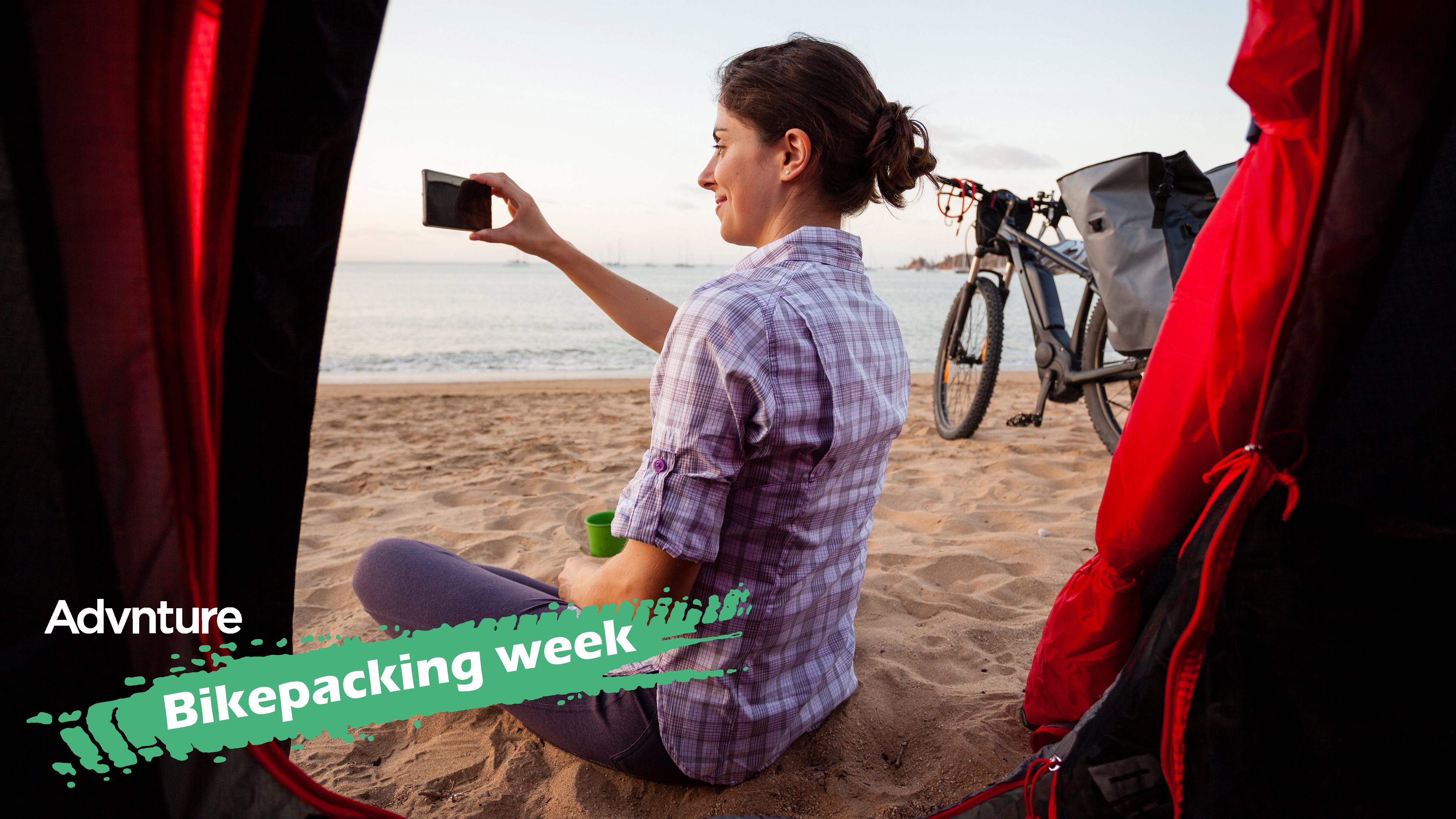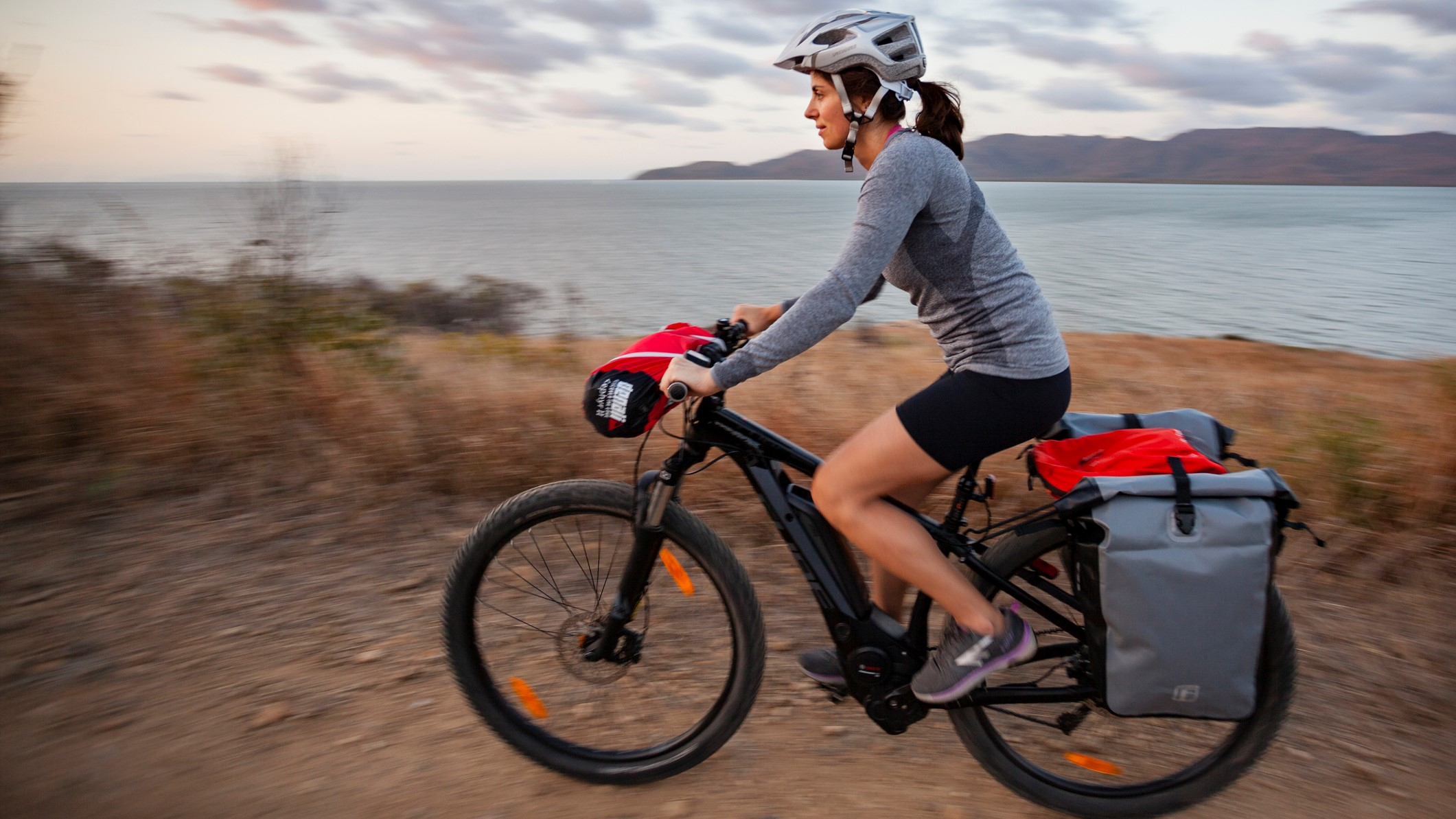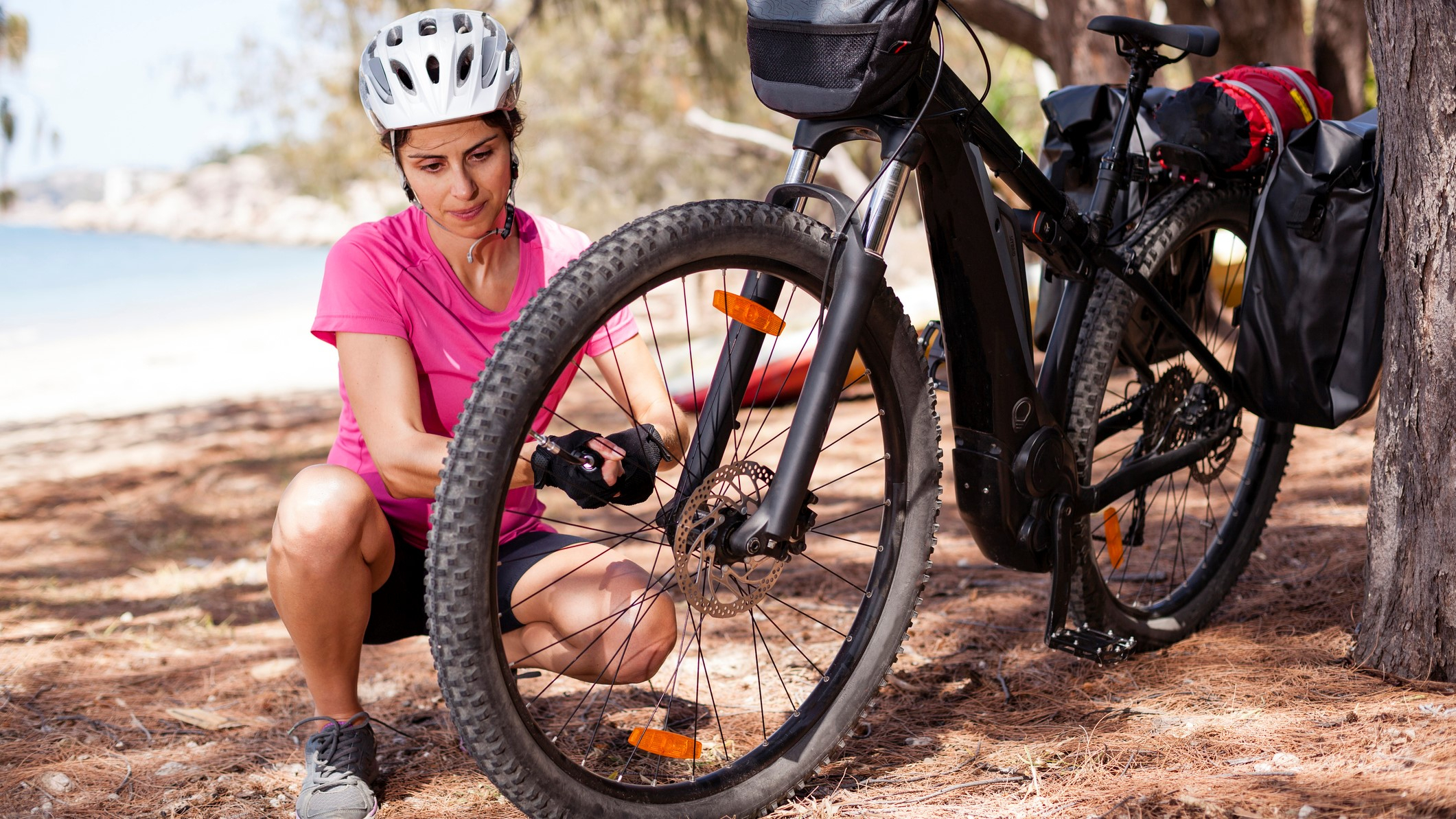E-bikepacking tips: your guide to battery-assisted adventures
An e-bike is a great choice for bikepacking, but there are a few extra considerations you need to bear in mind

E-bikes make a lot of sense for bikepacking, and open it up to people who might ordinarily shy away from the idea. A little battery assistance makes it easier to handle heavy loads, and can help iron out hills so your legs have enough energy to keep going for the long run. Whether you have limited mobility or fitness or not, they just make things that little bit easier and more comfortable.
We've started seeing more and more e-bikes with serious carrying capacity in recent years, so you can easily tote some of your regular camping gear rather than investing in a full set of ultralight equipment, and even take a few luxuries as well. They're getting more affordable too, and it's now quite possible to pick up a solid off-road ready e-bike for under $2,000. That's certainly not pocket change, but when you consider the joy you can get out of it, and how many car journeys it could replace, it starts to make sense. The new Ride1Up Rift is one example, as is the Lectric XPedition.
There are a few extra factors to consider when you're planning to go on a power-assisted bikepacking expedition, but keep these in mind and you'll be able to glide along with confidence.
Choose the right bags
Bikepacking bags can pose a challenge when you've got a motor on board. Many e-bikes have batteries integrated into the downtube, making the tube thicker than it would be on a conventional bike. The downtube might also lack the braze-ons you'd find on a push-bike, giving you fewer mounting points. You may also run into difficulty with handlebar bags if your e-bike has a digital display/control head unit.
Thankfully, there are solutions. Your bike's manufacturer might sell mounting kits specifically designed for its bikes. There may not be frame bags available, but rear racks and front baskets are quite common, and can often hold a surprisingly heavy load.

Some bag makers have also come up with solutions. Ortlieb makes some of the best bikepacking bags around, and sells an e-bike mounting set that lets you mount and lock handlebar bags onto electric bikes without getting in the way of the display.
If you're still struggling to make a typical bikepacking setup work, a touring style pannier system might work better. A waterproof roll-top design will work well to keep your gear dry, and some e-bike panniers are even made with an extra pocket to hold a spare battery.
Advnture Newsletter
All the latest inspiration, tips and guides to help you plan your next Advnture!
Maximize range
All e-bike manufacturers quote a maximum range, but this is usually measured in ideal conditions. Depending on where and how you're riding, real-world performance might be very different. Riding uphill, on rough ground, into a headwind, while carrying heavy loads, or with deflated tires will all reduce your bike's actual range.
Make sure you plan your route carefully in advance using a tool like Komoot, which will show you the gradients and help you choose a route without too many super steep climbs. Skirting the highest inclines will help you get more mileage from your battery.
Riding during the warmer months will also allow you to travel further. As you may have noticed from using your phone in the winter, lithium batteries don't like the cold and it makes them less efficient, thereby reducing your bike's range.
If your e-bike has a throttle, you can get more from its battery by keeping your thumb away and sticking to pedal-assisted riding instead. Relying on the throttle reduces the bike's maximum range drastically.
Keep on top of maintenance
E-bikes don't require much more maintenance than unpowered bikes, but it's worth bearing in mind that their components are subjected to greater forces due to the motor, so certain parts may wear out more quickly.
Always give your bike a once-over before setting off, testing the brakes and checking the tire pressure, and inspect it for signs of wear or damage. You might not notice a problem like a slow puncture when you're riding, because the bike's motor will compensate for the low pressure.
You should also take it for servicing at a bike shop at least once per year so the staff can install any important firmware updates.

Find a place to charge
If you're bikepacking for more than a day or so, you'll want to charge your e-bike overnight. Many campsites offer pitches with electrical outlets, which cost a little extra, but will work perfectly for juicing up your bike.
To avoid your battery overheating, unplug once it's fully charged and only use the official charger that was supplied with your bike. For more details, see our guide how to avoid e-bike fires.
Take an extra battery
Getting stuck somewhere with a heavily laden e-bike and no power would be an absolute nightmare, so you might want to consider buying an extra battery for bikepacking expeditions. These are heavy and expensive (never be tempted to pick up a cheap knock-off online, as these can be a fire hazard) but that might be a price worth paying to avoid running out of juice far from a power outlet.
This article is part of Advnture's Bikepacking Week 2023 (running from Monday 22 to Sunday 28 May), our ultimate guide to adventuring on two wheels including essential advice, gear, and features to help you plan the perfect expedition.

Cat is Homes Editor at TechRadar and former editor of Advnture. She's been a journalist for 15 years, and cut her teeth on magazines before moving online. She helps readers choose the right tech for their home, get the best deals, and do more with their new devices.
